Hangeul step 4
|
|
| Help · Cheat Sheet · Community portal |

|

|
Aspirated Consonants

In this section, we are going to learn the aspirated consonants ㅋ, ㅌ, ㅊ, and ㅍ (as well as another consonant, ㅎ). Looking at the picture on the right, do you see a resemblance between the old letters we have already learned (top row) and the bottom row?
Before I go on any further, I must explain what aspiration means. Aspiration is letting out a strong burst of air when making a sound. To feel or see the difference between aspirated and unaspirated sounds, one can hold a lit match in front of one's mouth, and say tore and then store. One should either feel a puff of air or see a flicker of the candle flame with tore that one does not get with store. In most dialects of English, the t is aspirated in tore and unaspirated in store1. Another example is pat (aspirated p) and spat (non-aspirated p).
The new letters we are about to learn are just the aspirated versions of the old letters we learned, we pronounce it the same way in the mouth except we let out more air. Also if you noticed, to write these letters you simply just add one more stroke.
- Source: Wikipedia:Aspiration_(phonetics)
Y sound vowels

The vowels we will be learning in this section are ㅑ, ㅕ, ㅛ, ㅠ, ㅖ and ㅒ. Once again, I will ask: Looking at the picture on the right, do you see a resemblance between the old letters we have already learned (top row) and the bottom row? With these new vowels, you are simply adding a Y sound (IPA: /j/) in front of our previous vowels. As a simple example, we had previously learned that ㅜ sounds very close to the <oo> in the word <moon>. So for ㅠ we add a Y sound in front of ㅜ and now it sounds like "yoo."
ㅅ reminder
Remember in step 3 we mentioned that ㅅ when combined with the vowels ㅣ, ㅕ, ㅑ, ㅠ, ㅛ it is pronounced like a SH sound like in <sheet>. It is an SH sound anytime it combines with these double stroked vowels or the vowel ㅣ. IPA symbol: /ɕ/.
Beginning lesson
|
| ||||||||||
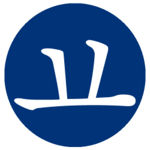 This is pronounced just like ㅗ but with a Y sound in front of it. Almost like <yo> in English. IPA symbol: /jo/. For full information about this letter, see ㅛ.
|
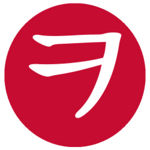 This is an aspirated k sound. This is pronounced just like ㄱ but with more air coming out. IPA symbol: /kʰ/. For full information about this letter, see ㅋ. | ||||||||||
| Practice | |
|---|---|
| 카 | |
| 키 | |
| 코 | |
| 쿄 | |
| 소 | |
| 쇼 | |
|
| ||||||||||
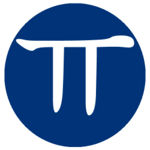 This is pronounced just like ㅜ but with a Y sound in front of it. Almost like <you> in English. IPA symbol: /ju/. For full information about this letter, see ㅠ.
|
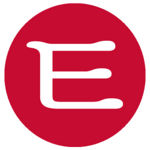 This is an aspirated t sound. This is pronounced just like ㄷ but with more air coming out. Think of the <t> in <top>. IPA symbol: /tʰ/. For full information about this letter, see ㅌ. | ||||||||||
| Practice | |
|---|---|
| 투 | |
| 튜 | |
| 수 | |
| 슈 | |
|
| ||||||||||
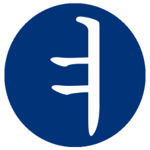 This is pronounced just like ㅓ but with a Y sound in front of it. Much like the <you> in <young>. IPA symbol: /yʌ/. For full information about this letter, see ㅕ.
|
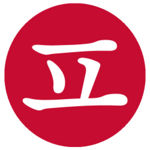 This is an aspirated p sound. This is pronounced just like ㅂ but with more air emitted from the mouth. Think of <pit>. IPA symbol: /pʰ/. For full information about this letter, see ㅍ. | ||||||||||
| Practice | |
|---|---|
| 피 | |
| 표 | |
| 퓨 | |
| 펴 | |
| 겨 | |
| 켜 | |
| 서 | |
| 셔 | |
|
| ||||||||||
 This is pronounced just like ㅏ but with a Y sound in front of it. Much like the <ya> in <yard>. IPA symbol: /ja/. For full information about this letter, see ㅑ.
|
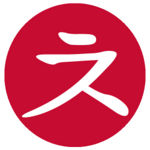 This is a CH sound. This is pronounced just like ㅈ but with more air emitted from the mouth. Think of the <ch> in <cheek>. IPA symbol: /tɕʰ/. For full information about this letter, see ㅊ. | ||||||||||
| Practice | |
|---|---|
| 지 | |
| 치 | |
| 쳐 | |
| 냐 | |
| 사 | |
| 샤 | |
|
| ||||||||||
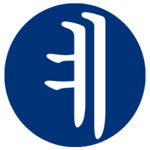 This is pronounced just like ㅔ but with a Y sound in front of it. It is somewhere between the <ye> in <yes> and the <yea> in <yea or nay>. IPA symbol: /je/. For full information about this letter, see ㅖ.
|
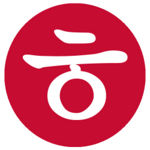 This is an H sound. IPA symbol: /h/. For full information about this letter, see ㅎ. | ||||||||||
| Practice | |
|---|---|
| 히 | |
| 호 | |
| 효 | |
| 휴 | |
| 혜 | |
| 겨 | |
| ||||
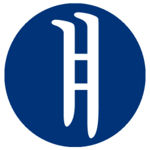 This is pronounced just like ㅐ but with a Y sound in front of it (not much differently than ㅖ). It is like the <ye> in the North American and British <yes> and like the <ya> in Australian and New Zealander <yak>. IPA symbol: /jɛ/. For full information about this letter, see ㅒ.
| ||||
| Practice | |
|---|---|
| 걔 | |
| 쟤 | |
Real Examples
Practice with these real Korean words. The examples for step 4 have been split. Half of the examples for step 4 are here and half are on the next page.
| Word | Audio |
|---|---|
| 가르치다 (to teach) | |
| 가리키다 (to point at) | |
| 가치 (value) | |
| 고추 (hot pepper) | |
| 고프다 (to be hungry) | |
| 교수 (professor) | |
| 구타 (beating) | |
| 구토 (vomiting) | |
| 구치소 (prison) | |
| 구하다 (to rescue) | |
| 구호 (a slogan) | |
| 기계 (machine) | |
| 기타 (guitar) | |
| 기차 (train) | |
| 기차표 (railroad ticket) | |
| 기체 (gas, vapor) | |
| 기초 (basis) | |
| 기호 (symbol) | |
| 나타나다 (to appear) | |
| 노예 (slave) | |
| 노크 (knock) | |
| 노처녀 (maiden lady) | |
| 니트 (knitwear) | |
| 다치다 (to get hurt) | |
| 대여 (a loan) | |
| 도토리 (acorn) | |
| 도표 (chart, diagram) | |
| 마치다 (to finish) | |
| 매표소 (ticket office) | |
| 며느리 (daughter-in-law) | |
| 모피 (fur) | |
| 묘지 (grave) | |
| 미치다 (to be crazy) | |
| 바코드 (bar code) | |
| 배터리 (battery) | |
| 배추 (Chinese cabbage) | |
| 벼 (rice plant) | |
| 부여하다 (to bless someone) | |
| 부케 (bouquet) | |
| 보드카 (vodka) | |
| 보호하다 (to protect) | |
| 비키니 (bikini) | |
| 비키다 (to move aside) |

|

|
